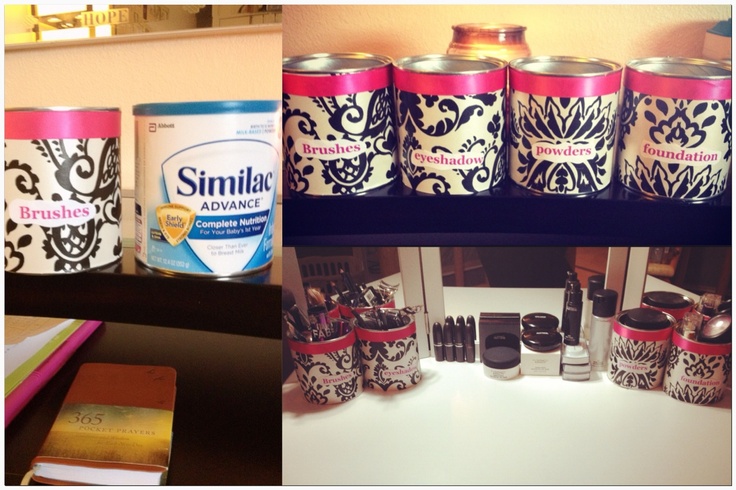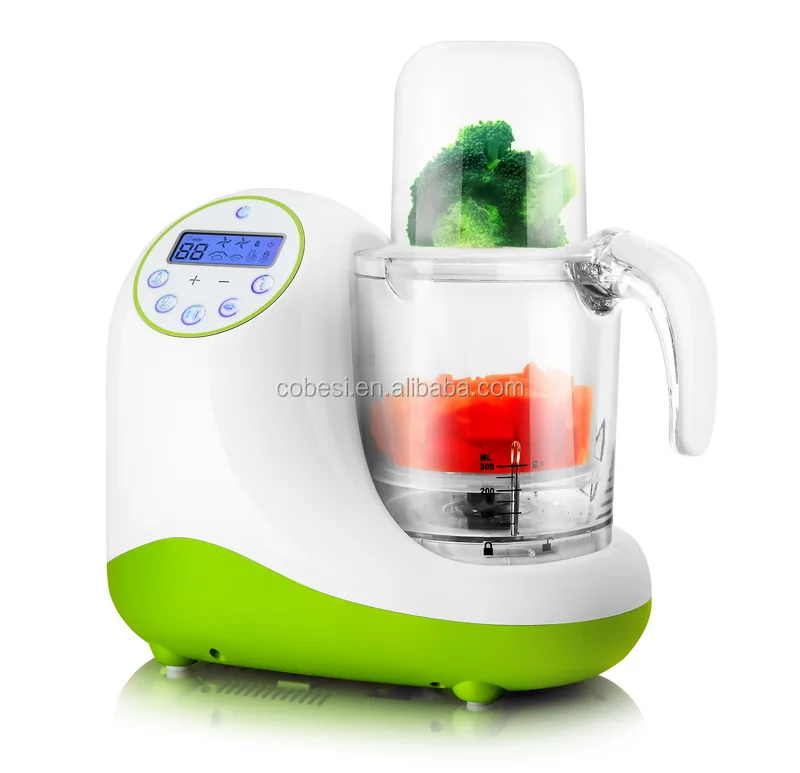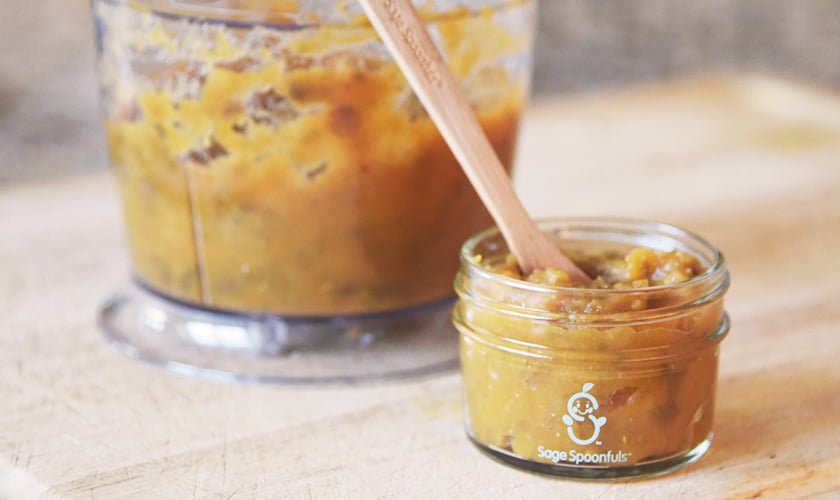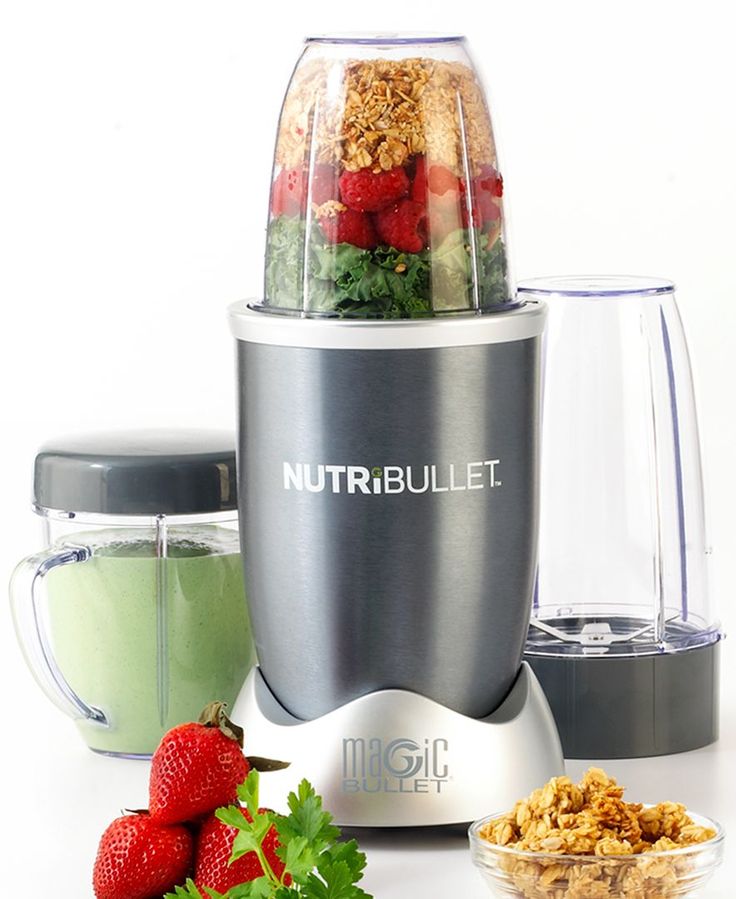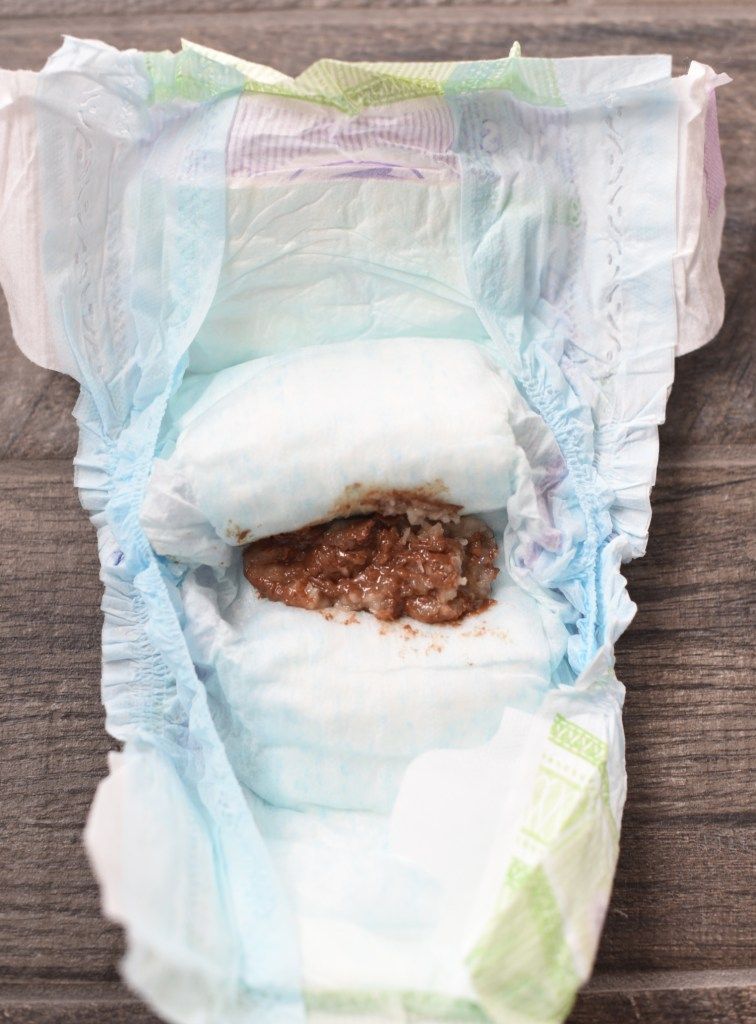How to feed a baby lorikeet
Hand Raised Rainbow Lorikeet Information
Rainbow Lorikeet for Information
Rainbow Lorikeet in TreeDistribution of Rainbow Lorikeets
Rainbow Lorikeets are found in Australian mainly in northern and eastern areas. Their habitat are wet sclerophyll forest, rainforest, coastal forests, suburbs and urban areas with trees. They can also be found in Indonesia, Vanuatu and New Caledonia. They have been introduced into Perth and a well establish population has occur.
In the last twenty years Rainbow Lorikeets have become more common in major city around Australia, including Sydney, Melbourne and Brisbane.
Weight
125-150 grams
Length
around 14 inches
mutations of rainbow lorikeetsDescription and Sexing Rainbow Lorikeet’s
Rainbow Lorikeet truely live up to their name, with bright plumage and a personality to match. They have a violet blue head, light green strip at the back of the neck, green back wings and tail, with yellowy/red/orange chest. The chest colouration of many bird varies in colour. this is no idication of sex, as the males and females look identical, the only way to sex these birds is DNA and sergical sexing.
Juvinile bird have duller plumage then the adult, brown eye instead of black and a black beak instead of bright red/orange. It can take up to a year before juviniles fully colour up and get their bright colours.
breeding rainbow lorikeet
Care and Feeding Lorikeet’s
Rainbow lorikeets unlike most parrots don’t eat seed, in the wild lorikeets feed on nectar and pollen from plants and flowers. Pet lorikeets require a nectar replacement diet, which are available at Birdsville. These mixes come in powder form and there are two main types of nectar replacemet, eware of some supermarket lorikeet feeds as they are low quality some very healthy lorikeet foods include vetafarm forest fusion, wombaroo, and golden lory rice formula.
Good quality Dry mix (Lorri-dry) – with dry, plenty of fresh drinking water needs to be made available for the bird.
Good Quality Wet mix (Lorri-wet) – with wet, their requirements for drinking will be reduced, as the feed contains a large amount of water, however fresh drinking water should still be made available.
Young birds should be feed on both wet and dry mix in separate containers and can later be weaned on to dry mix only.
If you unsure Of the Quality of the Lorikeet Mix you feed your bird ask your local bird Expert.
Rainbow lorikeets also need their diet supplemented with fresh fruit and vegetables on a daily basis. Spinach or silverbeet leaves are important to provide calcium for the bird. Your bird with also require vitamin mixed into their water every two to three days. This is to provide essential nutrients commonly deficient in their diet. Also supply your lorikeet with a calcium supplement.
Do not feed your bird (or any other bird) avocado, onion, chocolate, caffeine or alcohol.
Housing – Cage’s
Rainbow Lorikeets are an active, playful bird that needs suficient room to move around, stretch their wing and play with toys. When choosing a cage keep this in mind and remember the bigger the cage the better off the bird will be.
Select toys that can be chewed, wrestled and played with. Toys with rope, leather, bells and wood. Swing are also important to keep their legs strong and is a form of exercise. Different size perches are important for the bird feet and natural wood is the best.
5 weeks old Rainbow Lorikeet
Introducing your new bird to existing birds
Once you take your bird home you should keep it in a separate cage and allow the bird to adjust accordingly. Let the birds see and listen to eachother through there cages to get used to eachother. Always allow at least 2 weeks before introducing the bird to an existing bird.
Worming– Have you wormed your bird?
Your bird will need to be wormed in a few weeks to two month after being taken home (check with the staff from Birdsville, when purchasing). Young birds that have been recently weaned have a delicate bacteria’s developing in there gut, worming at this stage could harm the bacteria’s development and your new bird. Worming will need to be done
Young birds that have been recently weaned have a delicate bacteria’s developing in there gut, worming at this stage could harm the bacteria’s development and your new bird. Worming will need to be done
every 6 month. Worming your bird is essential for the health of all parrots in captivity.
Lice & Mites
These are the two most common parasites of cage birds and their environment, but are easily controlled with a Mite and Lice spray, available at Birdsville. When using spray, spray bird, entire cage, perches, nesting box and toys, remember to remove all water and feed and avoid spraying in birds’ eyes. Your bird Lice and mite bottle will explain how to use, remember avoid the mouth and eyes.
Enrichment for Lorikeet’s – Toys
Toys are used as a form of environmental enrichment but enrichment shouldnt stop there. As an ex zoo keeper it was a major concern that all animals must have a variety environmental enrichments to keep the critters entertained.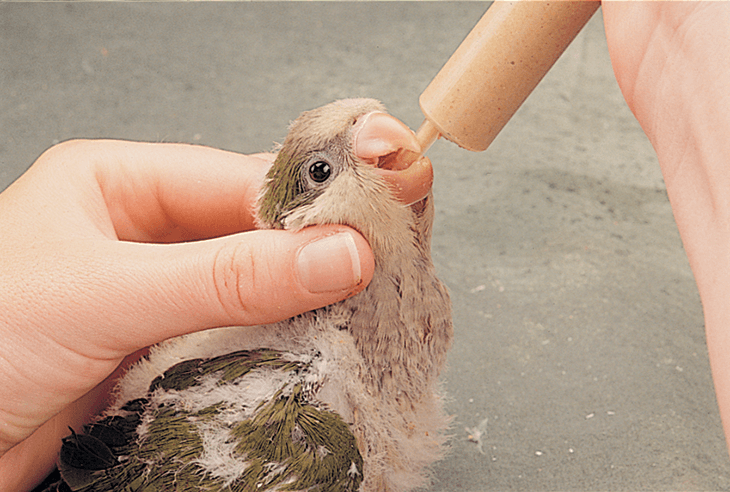 This is in no way different for anyone who has a tame parrot at home. Enrichment is important because parrots simply can not thrive with only perches, food and water. The fact is birds provided with enrichment are unlikely to develope psychological problems such as self mutilation, feather plucking and excessive squarking. Enrichment WILL in fact effect your bird in a positive way with its mental and physical development when training your bird you will actually end up with a better, less fearful, friendlier and relaxed bird which will be more easily trained. Enrichment can be chew toys, play toys, leather toys, acrylic plastic toys, wooden toys, shredding toys, ropes, swings, ladders, bells, balls, birdie balls, plain card board,small boxes, wicker baskets, tray of wheat grass, plants, bird baths,different foods, food kabobs, nuts, (all available at birdsville) You may also find in your local area pine cones, hide food inside pine cones, twigs, bendy branches, flowers and branches- safe flowers are bottle brush, grevellia, eucalypt melaleuca flowers, hubiscus, marygolds, dandy lions leaves and all, roses, violets to name a few.
This is in no way different for anyone who has a tame parrot at home. Enrichment is important because parrots simply can not thrive with only perches, food and water. The fact is birds provided with enrichment are unlikely to develope psychological problems such as self mutilation, feather plucking and excessive squarking. Enrichment WILL in fact effect your bird in a positive way with its mental and physical development when training your bird you will actually end up with a better, less fearful, friendlier and relaxed bird which will be more easily trained. Enrichment can be chew toys, play toys, leather toys, acrylic plastic toys, wooden toys, shredding toys, ropes, swings, ladders, bells, balls, birdie balls, plain card board,small boxes, wicker baskets, tray of wheat grass, plants, bird baths,different foods, food kabobs, nuts, (all available at birdsville) You may also find in your local area pine cones, hide food inside pine cones, twigs, bendy branches, flowers and branches- safe flowers are bottle brush, grevellia, eucalypt melaleuca flowers, hubiscus, marygolds, dandy lions leaves and all, roses, violets to name a few.
Note anything found outside should be disinfected and non poisonouse and toys must be non toxic.
Enrichment tip- the trick to keeping them entertained is regularly rotating toys as they will become bored with the same toy in there cage day after day. Changing them regularly will create interest for your bird as if they are receiving a whole new toy to play with.
Curious Rainbow Lorikeet had to investigate the strange looking bird in his neighbourTraining Your Bird
Training is an important factor of having a well behaved hand raised bird. When you first get the bird home, let it settle down and get use to their new environment for a day or two. After these initial days, the bird should be handled in a quiet, relaxed situation. Spending time with your bird while watching TV or reading is perfect, but don’t over stress your bird in the first few weeks of taking it home, babies need their rest. The more time you spend with your bird, the better your bird will become.
When doing any training there are three basic concepts to keep in mind.
- When the bird does something good –> give it a reward
- When the bird does something undesirable –> ignore it
- Never punish your bird
Start training your bird with a simple command, like step up.
Have the bird on one hand, place the other hand against the birds’ chest and say the command, step up, as you apply a slight pressure to the birds’ chest. The bird will then put one leg up, pull slightly up with the second hand and the other leg will follow, reward your bird with a treat, like a favorite fruit, seed or nut. Then repeat, as the bird gets better, get it to step up a few times before rewarding. Once your bird catches on to it, instead of rewarding it with food, reward it with praise. This will soon become second nature to the bird.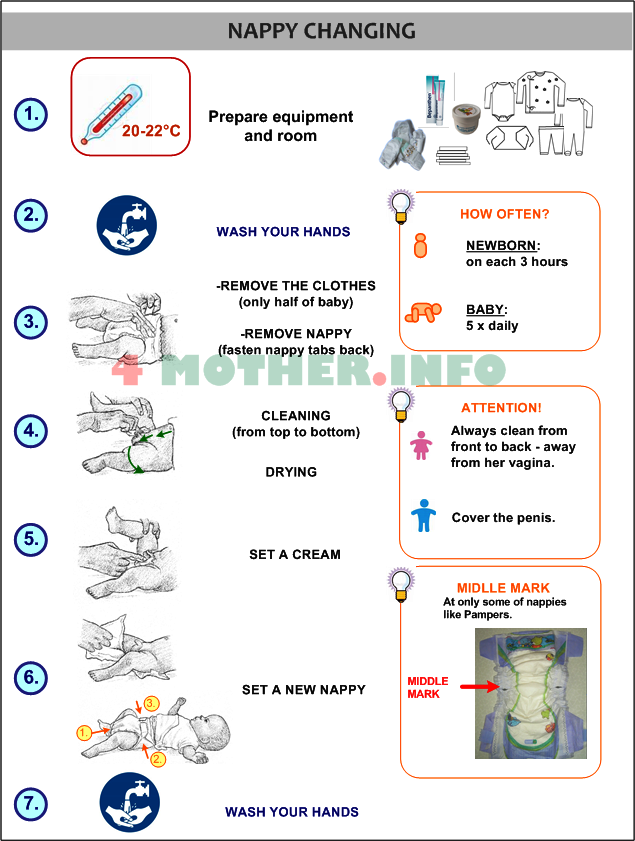
It is important not to overdo the training, keep it short, but frequent.
What to Look for When Purchasing a Rainbow Lorikeet
Never purchase a bird without having a good look at them first!
When you are ready to purchase your new Little Lorikeet, here are so few hints for what to look for.
-
Eyes – should be bright and clear, there should be no discharge, swelling or redness. If the eyes that are runny, squinty, or discolored can be an indication of infection.
-
Condition- This is very important and should be understood by any bird owner as a bird handler every time i touch any bird i feel the birds condition by touching the birds keel bone which is underneath the bird this is the anchor where the birds large wing muscles attach to allow the bird to have strong wing muscles for flight. When a bird is un well the first thing that usually happens is they lose weight and there breast muscle becomes very light on.
 Because of birds very high metabolic rate they can lose weight very quickly and become ill so this should be checked by bird owners on a regular basis especially if they see there bird not as active as normal.
Because of birds very high metabolic rate they can lose weight very quickly and become ill so this should be checked by bird owners on a regular basis especially if they see there bird not as active as normal.
-
Mouth and beak – should be clean and free of injury, no lesion, wetness or build up insid the mouth. The beak should not be over grown.
-
Nose, nostrels or cere – should be open and free of discharge.
-
Feathers – the bird should be fully feathered and sleek with a smooth appearance. Depending on the age, often the body and tail feathers will be somewhat ragged due to young birds regularly walking through there wet food and having them rub on objects and wire.
-
Wing Clipping – if wings are clipped, both wings should be clipped, not just one and all outer feathers should be cut. If the last two outer feathers are not cut the bird could injur themself and if only one wing is only clipped the bird still may fly, just lopsided and cause injury when landing.
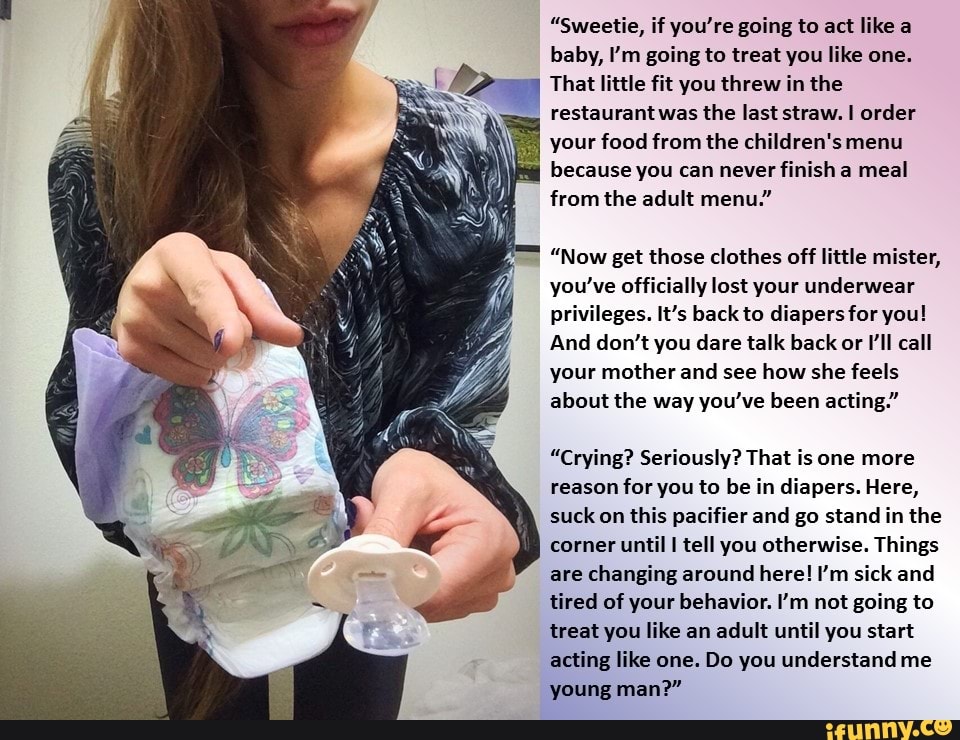 Birdsville will clip wing for free with any purchase.
Birdsville will clip wing for free with any purchase.
-
Weaning – it is highly recommended, if you don’t have hand raising experience, only weaned birds should be bought. Hand feed might look and seem like a simple process, but it can be easily done incorrectly adn time comsuming. Mistakes when hand feeding can cause irreversible harm and even lead to death of the young bird. Alway choose birds that are fully weaned and eating independently. Your bond with the bird will not suffer for it in the least.
-
Voracious eaters – observe the birds that you’re interested in and you should look for birds that are the most voracious eaters. Choose a bird that displays a large appetite. This is an indication of good general health and well being.
-
Clean enclosure – the enclosure where the birds are kept should be clean and hyginic, to reduce the likelyness of illness or infection.
- Active and alert – The bird should be active and alert.
 If it appears sluggish or weak it could be ill or to young to be feeding on it’s own.
If it appears sluggish or weak it could be ill or to young to be feeding on it’s own.
Species Specific Problems and how to avoid them
- Yeast infections – Can be caused by of the high sugar content.
Signs to look out for: Your lorikeet is uncharacteristically lethargic and not his normal energetic self.
If Your lorikeet is not behaving normally seek vet advise as soon as possible.
- Fungal infections – Is a common illness in lorikeets and can be caused by a number of reasons. Most commonly it is from poor housing or contaminated food. A lack of vitamin A in their diet can cause the bird to pick up something they shouldn’t.
To minimise the possibility of contacting a fungal infection, keeping them in a clean environment, by regularly cleaning their cage, providing fresh food that is rich in vitamin A, such as carrots and sweet potato and make sure the water is fresh and clean.
- Bacterial infections- Birds can become ill from a variety of bacterial infections found in a home environment which can be contracted from the floor, kids and other animals.
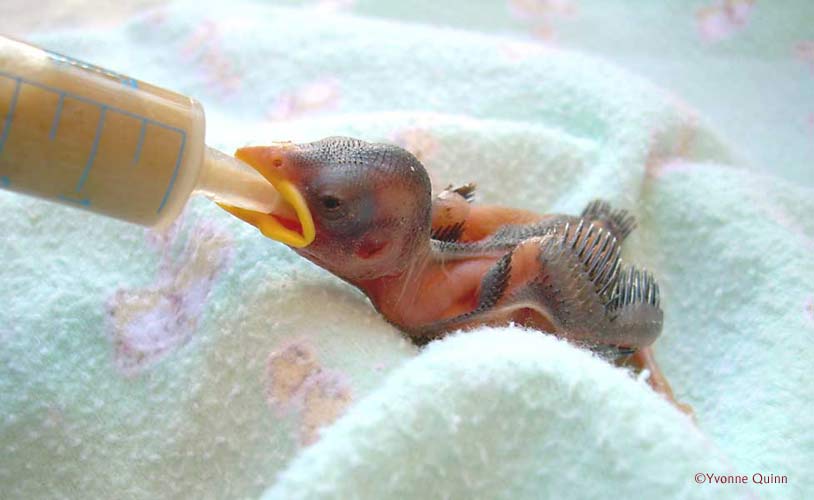 Stress can be a large contributing factor making them more prone to sickness.
Stress can be a large contributing factor making them more prone to sickness.
If your bird is not as active as normal and appears fluffed, immediately up keep it warm with a heat lamp or a heater close to the cage. Broad-spectrum antibiotic powder is available at Birdsville, which goes into the water or contact a vet immediately.
- Beak and feather disease – Better known as BPFD virus or BPFDV is infectious to all parrots and is usually spread by feather dust and droppings. This is why the virus has become to common and prevalent all over the world and Australia.
Many young birds that have beak and feather disease die at a very early age before they leave the nest. Others show many symptoms from a very young age. These symptoms are often losing feathers but many lorikeets after a while build up an immune response and in time will grow there feathers back as if they never had the virus at all and live a long healthy life. These birds are generally immune from the disease, but probably become carriers for the remainder of there lifetime.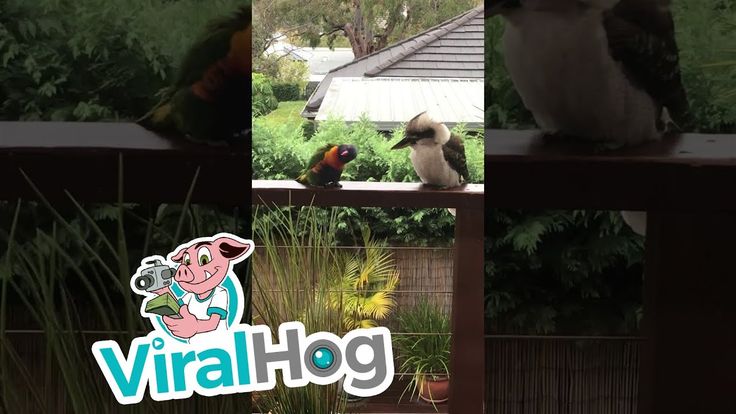
Some birds which have a weak immune system that contract the disease can become ill and eventually die.
There is no vaccine to beak and feather disease but you can increase the odds for your living a long and happy life by giving your bird a healthy diet, clean environment and eliminating stress.
Which brings us to our next important point.
- Stress- When I was a zoo keeper one of our most important job was to eliminate stress, as this can be the one of the biggest issue’s with any animals kept in a captive environment. Eliminating stress is as simple giving your Little Lorikeet the correct environment they need. When they are adults they love noise and attention, but for young baby birds, in a new home, you do not want to over stress them. Often over excited kids can stress a bird out with too much love and grabbing, chasing etc. Give them time to get used to there new environment to feed and drink and rest. Birds that are stressed are more susceptable to viruses and infections named above.

- Obesity- Obesity is an issue for many captive birds and can result in early death. It is important to having a large cage with swings and different size perches. It is also important for them to have sometime to exercise out of the cage, this will help your bird burn some calories. Another major fact is diet, Your bird should have a healthy diet with plenty of fresh fruit. There are low fat lorikeet food options available at Birdsville.
- Trauma and injuries- Broken leg, beak, wing and feet. As with any small birds damage and injury can occur by simply letting your bird out of a cage and he flies into a window or another common injury in house hold pets is them flying into a ceiling fan. To avoid this with unclipped birds, you will have to let your bird become use to their new environment making sure all windows are shut, ceiling fans turned off and your bird is supervised while out of the cage. If any of your birds receive any traumatic injuries you should take your bird to the vet immediately.

Household dangers for hand raised birds.
- Dogs and cats – if not socialised properly can be a big danger for prey animals such as birds. Little Lorikeets must be supervised at all times with a dog or cat in the house. This may be difficult with hunting breeds of dogs and some cats. The resident animals must have some time to get used to the new family member and accept them as a member of the family. I can not stress enough please be very careful in introducing any new animal as they can be very unpredictable.
- Ceiling fans – Owners of birds can easily forget to turn off ceiling fans when they let the birds out of the cage for a fly which can have disastrous results.
- Windows, doors and mirror
- Poisons – Inhaling or eating toxic substances such as zinc, copper, bleach, oven cleaner, glues, nail polish remover, paint and insecticides to name a few.

- Open water – if a bird falls into a sink full of water or even head first into a coffee mug can drown a bird
- Electric cords
- Inappropriate foods – such as alcohol, chocolate, onion and avocado.
- Drafts – Can be one of the biggest killers of birds causing them to become sick, so keep your feathered friend in a draft free zone.
- Infections – picked up in an unclean house.
Lorikeet and Lori Care Sheet
For the first 3 days- do not over stress your new baby lorikeet but talk to him or her gently and give them a chance to get used to the new environment.
Environment
Cage– Choose a cage which is the biggest possible as this not only will make your lorikeet happier but will make your lorikeet a better pet as lorikeets placed in a small cage tend to be hard to train and become aggressive. Remember they need sufficient room for their toys and swings and a place to have a good flap of the wings.
Remember they need sufficient room for their toys and swings and a place to have a good flap of the wings.
Toys– Essential for these intelligent birds these birds make full use of all kinds of toys including foot toys, hanging toys, natural chew toys, luffa toys, plastic toys and so on. Why are environmental enrichment toys so important? It actually and literally keeps birds happy and stops aggression if you are wanting a friendly happy pet instead of an aggressive monster it is essential to raise your bird properly while the birds young and the brain is developing.
Swings– Great for these active birds as they have fun with swings it is also a form of exercise as they use muscles they normally wouldn’t use when standing on a still perch.
Some important tips for first time owners of baby Hand raised lorikeets.
Lite and mice spray– wait a week before spraying your new lorikeet with mite and lice spray, continue to spray your birds every 3 months for the remainder of the birds life.
Worming– Never worm a baby lorikeet right away, wait till they are at least 12 weeks old before worming and do not worm a bird until they have had 2 weeks to get used to their new environment. If you already have birds, worm them all at the same time.
Clean environment- This is very important for baby lorikeets as they have an undeveloped immune system and can become ill
Wet mix– Do not let wet mix spoil- change every 4 hours in hot weather as baby lorikeets are very delicate to bacteria as they have un developed immune systems.
Diet for Lorikeets
For the Health, vitality and longevity of pet lories lorikeets it is important to feed them a well researched quality lorikeet nectar supplement. There are many brands of lorikeet food many have good ingredient while leaving some to be questionable. If you are unsure talk to your local bird experts as they will have seen the breeding results in feeding good quality foods. Unlike other parrots Lorikeets feed on nectar from flowers as they main part of their diet in the wild.
Many diseases found in captive lorikeets can be avoided with the correct diet and feeding practices.
Lorikeet wet mix– this wet mix is essential for Baby lorikeets we recommend feeding baby lories a mix of lorikeet wet mix and hand rearing formula. This mix should be fed as a poor-able mixture resembling milk. Do not let the wet mix spoil especially in summer you will need to be vigilant as spoil t food can cause a bacterial infection which can cause sudden death. Wet mix is important and should be fed to lorikeets through the remainder of the birds life, after a lorikeet is 8 weeks old it may be weaned onto Lorikeet dry mix which is easier to feed and can be left out all day. Some great wet mixes include Sheps wet mix, Passwell Lorikeet food, Wombaroo lorikeet food, avione rearing and conditioning food, attraction lorikeet food, vetafarm lorikeet food and Elliots Lorikeet.
Lorikeet Dry food– This should be on offer at all times and must be replaced freshly on a daily basis. Some Mixes we have trialed with our birds which we recommend are Sheps Lori Dry, Passwell lorikeet food, Attraction lorikeet food, and avione lorikeet rearing and conditioning. You may have noticed that some of these were mentioned above this is because these foods mentioned twice can be used as a wet mix or a dry mix.
Some Mixes we have trialed with our birds which we recommend are Sheps Lori Dry, Passwell lorikeet food, Attraction lorikeet food, and avione lorikeet rearing and conditioning. You may have noticed that some of these were mentioned above this is because these foods mentioned twice can be used as a wet mix or a dry mix.
Vitamin supplement– Added via the water supply some Lorikeets are sensitive to high levels of vitamins so i would not over dose them but add to water maybe 2 times a week. Because of the reason that some lories are sensitive to High levels of vitamins only add vitamins to a lorikeets diet that has no vitamins added to the formula already. Sheps wet and sheps Dry have been specifically designed not to have vitamins added for this reason. Do not add Vitamins to the other Brands of lorikeet food mentioned above.
Fruits– pears, apples, citrus, watermelon, stone fruit, kiwi fruit, strawberries,rockmelon, banana, star fruit, pomegranate and grapes in moderation..jpg)
Vegetables and greens– Silver beet, sweet potato, carrot, green beans, peas, corn, capsicum, endive, broccoli
Calcium– Do not feed your lorikeet grit as a calcium source but instead add a calcium source to the water or supply calcium bells or a calcium perch.
Vitamin D supplement– This is essential for all birds to absorb calcium this supplement is not necessary if your bird gets over 3 hours of unfiltered sunlight a week. FYI sun through a window is filtered and they are enable to receive the necessary vitamin D
Iodine– many Lorikeets are iodine deficient
Water– always have a fresh supply of water and be careful as sometimes they can bath in their water bowl on a hot day and die of dehydration due to a lack of water.
Wild flowers– Be very careful in Baby Lorikeets clippings from plants as they have not built their immune systems yet and can be highly susceptible to bacteria’s spread from wild birds. Do not feed baby Lorikeets wild flowers until they are 6 months old. When feeding lorikeets flowers stick with native Australian trees.
Do not feed baby Lorikeets wild flowers until they are 6 months old. When feeding lorikeets flowers stick with native Australian trees.
Do not feed – Seed, lettuce, avocado, cocoa, milk or alcohole.
Training– visit our bird training page
Lori: what to feed? | Tail News
Lori parrots have an amazing contrasting coloration and lively temperament. It is simply impossible not to fall in love with these birds! However, before buying a pet, you should carefully read the features of caring for him. Loris are unique exotic birds, the content of which differs from that of other parrots. One of the key differences concerns the diet. Let's talk about feeding loris in our article.
nine0002 Under natural habitat conditions, the basis of the diet of most birds is cereals. Large exotic parrots, such as cockatoos, macaws, gray African parrots, feed mainly on fruits and tree bark.
 The diet of the loris is even more amazing. In nature, these beauties are fed by nectar, pollen of flowers, berries, fruits, inflorescences, i.e. mostly soft and liquid foods. The physiology of loris is fully adapted to such nutrition. Interestingly, the Lori language is very similar to the cat's. It is just as rough and also resembles a brush, which allows the parrot to easily lick liquid food from the surface. The beak of a loris is also not designed for coarse grain. It is long, pointed and smooth, without protrusions. With it, the parrot takes pieces of fruit and squeezes juice out of them. nine0005
The diet of the loris is even more amazing. In nature, these beauties are fed by nectar, pollen of flowers, berries, fruits, inflorescences, i.e. mostly soft and liquid foods. The physiology of loris is fully adapted to such nutrition. Interestingly, the Lori language is very similar to the cat's. It is just as rough and also resembles a brush, which allows the parrot to easily lick liquid food from the surface. The beak of a loris is also not designed for coarse grain. It is long, pointed and smooth, without protrusions. With it, the parrot takes pieces of fruit and squeezes juice out of them. nine0005 The type of food leaves its mark on the digestive system of the parrot. The muscular ventricle of granivorous parrots helps to digest roughage, but in lorises it is atrophied. Therefore, it is impossible to feed loris with grain feed. Cleaned, steamed grain should be no more than 10% of the total diet, and even then not for all varieties.
How to feed loris at home?
When kept in captivity, in order for the lory to be healthy and happy, its diet should be as close as possible to the natural, i. e. contain less protein, fat and fiber and more simple carbohydrates than other parrot foods. nine0005
e. contain less protein, fat and fiber and more simple carbohydrates than other parrot foods. nine0005
Many owners prepare nectars for loris on their own. But such food is not standardized, and any mistake can lead to broken stools and other problems. So, due to an unsuitable diet, a beak may grow strongly in a loris, or a parrot begins to pluck itself. In order not to risk the health of the bird, it is better to choose ready-made balanced feeds specifically for this variety.
Before choosing food for loris, carefully study its composition. The optimal composition for this type of parrot is: 11% protein, 3% fat, fructose as a source of carbohydrates (as in nature) and wheat gluten as protein sources. A weighty advantage will be the inclusion in the composition of nutraceuticals. They regulate the balance of vitamins and minerals in the body, support immunity and contribute to the proper functioning of body systems. nine0005
On the Russian market, balanced food for loris is represented by the Micropills Lori line. It fully meets the needs of the bird and is packaged in a sealed bag in a modified atmosphere to preserve its beneficial properties. Before serving, the food is diluted with boiled water to the consistency of sour cream. Thus, the parrot receives food that meets its needs.
It fully meets the needs of the bird and is packaged in a sealed bag in a modified atmosphere to preserve its beneficial properties. Before serving, the food is diluted with boiled water to the consistency of sour cream. Thus, the parrot receives food that meets its needs.
Despite the peculiarities of the content, which the inexperienced owner has yet to get used to, lorises are becoming more and more popular pets every day. With proper maintenance, these bright birds perfectly adapt to captivity and delight their owners for many years. nine0006
Other related articles
How to feed a parrot?
Prevention of gastrointestinal problems.
Why packaging quality is important
Types of packaging and their benefits.
Features of feeding large parrots
What you need to know.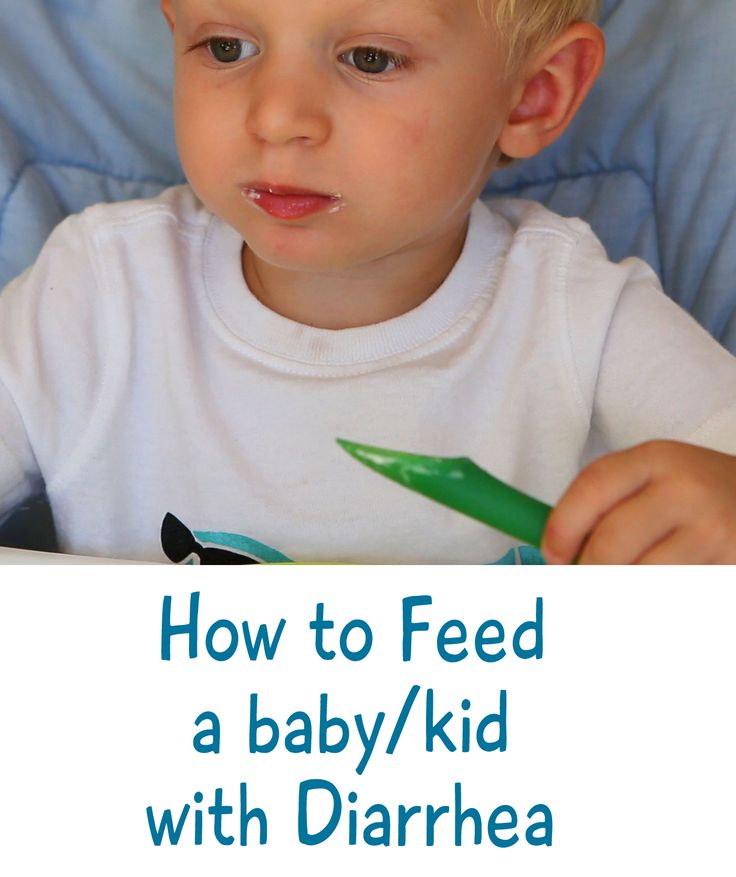
Multicolored (rainbow) lorikeet 🦜 Special bird
Rainbow lorikeet (lorie) is a spectacular parrot that captivates with its bright appearance. The color is very bright: blue on the head and on the belly, orange on the chest, a little on the shins and on the inside of the wings, yellow on the back of the head and on the legs, green, of course, prevails - on the back, flight wings and tail. By nature, the rainbow lorikeet is an active, curious, friendly and playful parrot. The colorful plumage of the bird, which, when moving, resembles an iridescent rainbow, which led to the corresponding name. Lori is trainable and able to reproduce up to 70 words, can perform various "numbers". Individuals of this breed are characterized by a loud and unpleasant "voice" and liquid droppings. These significant circumstances reduce people's desire to have a rainbow lorikeet as a pet. nine0005
The rainbow lorikeet, being in its natural habitat, has a residence permit on the mainland of Australia (most often in the northern and eastern parts), as well as on the islands located in the southwestern part of the Pacific Ocean (New Guinea, Solomon Islands, New Hebrides) . In the wild, parrots form a pair and, for their own safety, live in flocks. Life expectancy is from 20 to 30 years - half that of the Venezuelan Amazon. The bird has a small size - up to 30 cm. Unlike the necklace parrot, it is almost impossible to visually determine the sex of the loris; if it becomes necessary to determine the gender, a special test will have to be carried out. nine0005 Photo of a rainbow lorikeet
In the wild, parrots form a pair and, for their own safety, live in flocks. Life expectancy is from 20 to 30 years - half that of the Venezuelan Amazon. The bird has a small size - up to 30 cm. Unlike the necklace parrot, it is almost impossible to visually determine the sex of the loris; if it becomes necessary to determine the gender, a special test will have to be carried out. nine0005 Photo of a rainbow lorikeet
Rainbow lorikeet: at home
If you decide to get a feathered friend of the multi-colored lorikeet breed, then it is advisable to immediately purchase a soul mate of the same breed. Lories express aggression towards other parrots.
The cage should be spacious, ideally the lorikeet should be kept in an enclosure with vegetation.
You will have to clean the cage and around it every day, maybe even several times a day. Often the owners of this individual protect the space around the cage from droppings using plastic "barricades". If the bottom of the cage is retractable, then the cleaning process will take less time. nine0005 Photo of a parrot rainbow (multicolor) lorikeet
If the bottom of the cage is retractable, then the cleaning process will take less time. nine0005 Photo of a parrot rainbow (multicolor) lorikeet
Experienced owners of winged pets cover the bottom of the cage with paper and cover it with a lattice so that the bird does not eat the paper. It is recommended to let the parrot fly around the apartment, having a damp cloth on hand for timely cleaning of the litter.
In the cage, in addition to the basic set of necessary items, it is desirable to provide a place and organize a special “nest” there, where the loris will spend her free time. The parrot will be very grateful to you if there are perches and twigs from fruit trees in his cell, which he will “destroy” with pleasure. nine0005 A pair of rainbow (multicolor) lorikeets
Rainbow lorikeet is very fond of swimming, he can participate in water procedures several times a day.
In order to place the cage in the apartment in the best possible way, you will have to comply with all the “requests” of the lorikeets, namely:
- do not put the cage in direct sunlight
- draught-free
- do not expose your pet to extreme temperatures
- Keep the cage away from sources of loud noises and strong odors
- provide a temperature of 20°C (lorikeets do not like heat and cold)
Surprisingly, the rainbow lorikeet has a peculiar tongue shape that allows it to eat soft sticky food. For the same reason, they have a weak beak, not adapted to the "extraction" of solid food. The basis of the diet of the rainbow lorikeet is fruits, nectar and pollen. Pet stores sell special kits for feeding lorikeets - dry granules and food. nine0082 But you shouldn't abuse store-bought food: litter from pellets will become even more liquid, as birds drink plenty of water with them, and dry food often causes constipation. It is better to give specialized food and cereals in limited quantities, especially if the bird has not been accustomed to it since childhood. It is better to feed a feathered bird often, but little by little.
For the same reason, they have a weak beak, not adapted to the "extraction" of solid food. The basis of the diet of the rainbow lorikeet is fruits, nectar and pollen. Pet stores sell special kits for feeding lorikeets - dry granules and food. nine0082 But you shouldn't abuse store-bought food: litter from pellets will become even more liquid, as birds drink plenty of water with them, and dry food often causes constipation. It is better to give specialized food and cereals in limited quantities, especially if the bird has not been accustomed to it since childhood. It is better to feed a feathered bird often, but little by little.
To diversify the loris menu, use the following:
- bananas, pears, apples, carrots, berries, grapes
- wheat, oats, corn (in small quantities)
- water porridge with honey
- rose hips, daisies, dandelions
- baby food fruit mixes (suitable for food according to some breeders)
How to teach the Rainbow Lorikeet to speak
The Rainbow Lorikeet is a trainable parrot.

